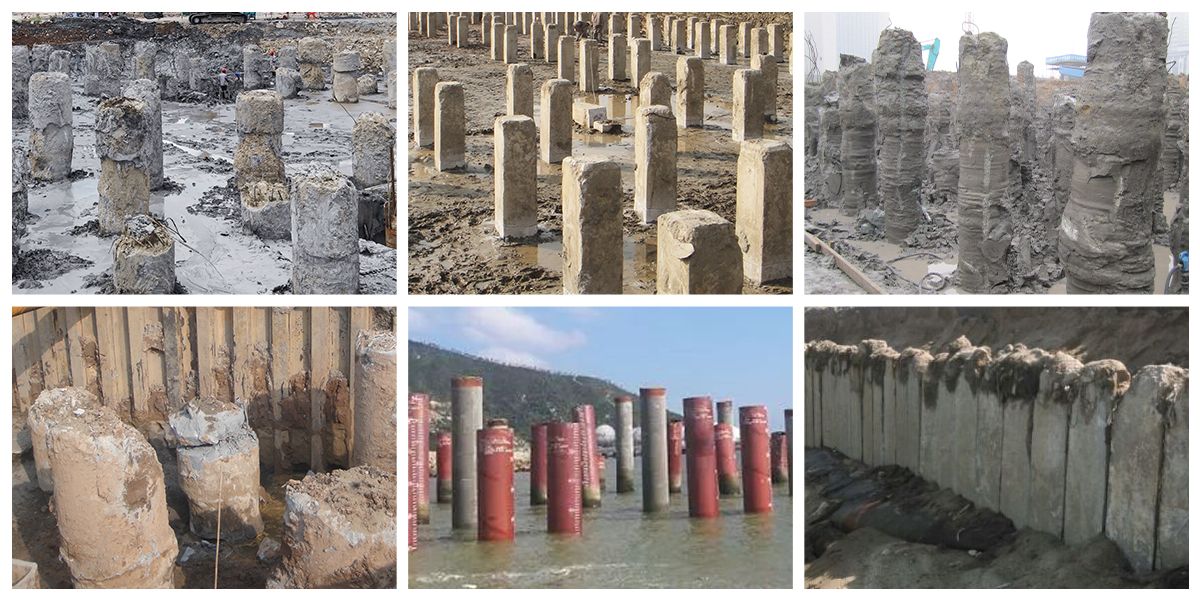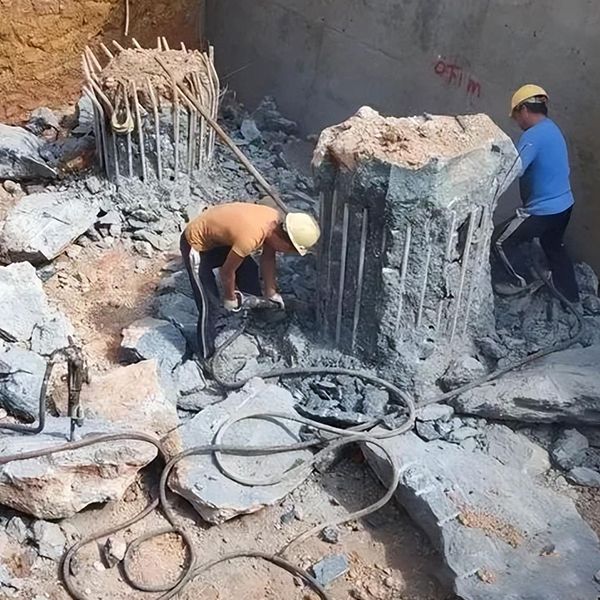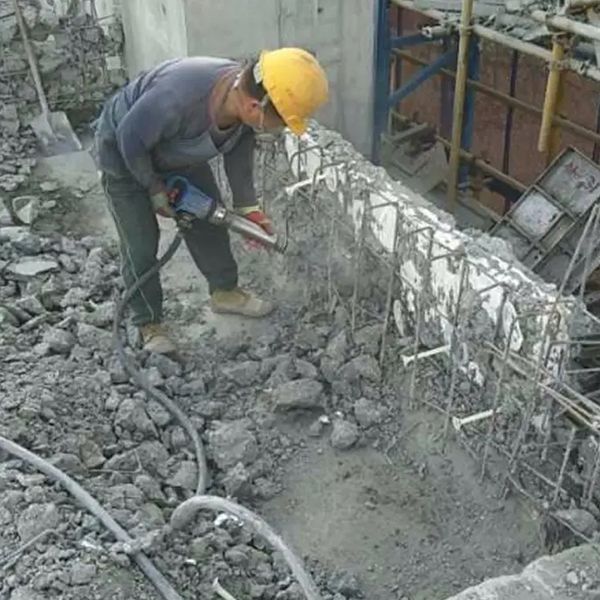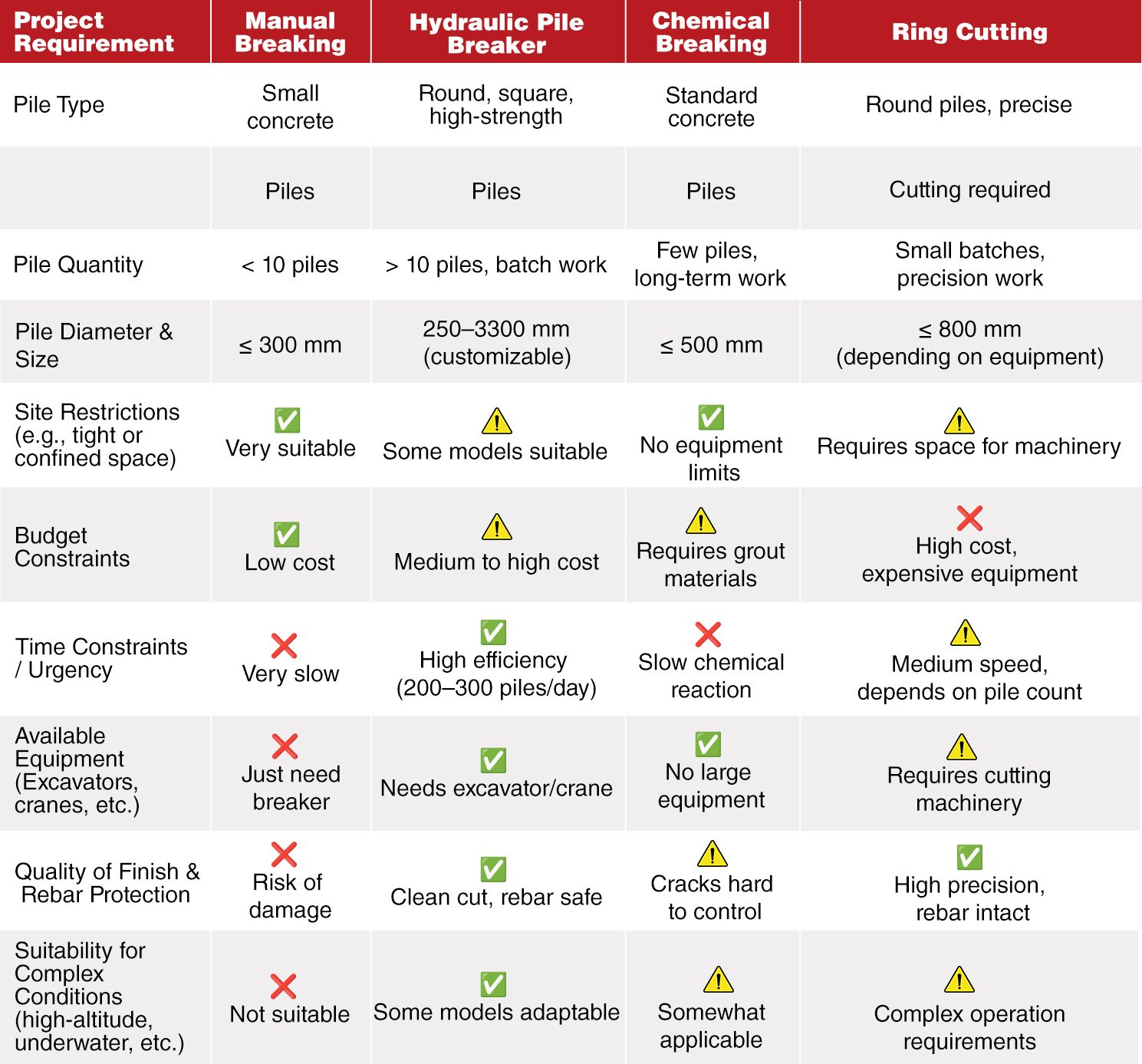Introduction
When installing concrete piles on construction sites, it is common to extend the pile deeper than the design depth to reach stable soil layers. However, Once the piles are in place, pile head cutting is required to remove the upper portion and expose the reinforcement bars for the next stage of construction. This process ensures a clean and stable interface for structural continuity. This article introduces common pile breaking methods available in the market and helps you identify the best approach for fast and effective pile breaking.
Common Pile Types That Require Breaking
Cast-in-place concrete piles: These are formed by drilling or boring holes on-site and then pouring concrete directly into the hole.
CFA (Continuous Flight Auger) piles: Concrete is poured simultaneously while drilling using a continuous auger system.
Precast concrete piles: These are pre-manufactured in a factory and driven into the ground using impact or static methods.

Pile Breaking Methods Overview
4.1 Manual Pile Breaking
Manual pile breaking involves workers using jackhammers or hand-held breakers. This method is suitable for small-scale projects, areas with restricted access, or piles with small diameters.
Pros:
Low equipment cost: No need to invest in expensive machinery or lifting equipment; basic jackhammer tools are sufficient, and used equipment can often be rented.
Suitable for tight spaces: Ideal for locations with limited space like basements, tunnels, or riversides where heavy machinery cannot enter.
Cons:
Extremely labor-intensive: Performance depends on workers' physical strength and environmental conditions.
Inconsistent finish: As breaking is done manually, pile head heights may vary, requiring additional trimming or adjustments.
Risk of damaging rebar or over-breaking
Slow progress on large-scale projects: Only 0.9 to 1.3 cubic meters of concrete can be removed per day.
Labor quality is inconsistent: Costs and skills vary by region. Rising labor costs can increase the overall expense.
Generally, unless the project is small-scale or site conditions prevent the use of large machinery, this method is not recommended. However, if budget or space limitations prevent other options, manual pile breaking may still be considered.


4.2 Hydraulic Pile Breaker
This is currently the most efficient, mature, and widely used solution. Suitable for medium to large-scale projects, especially those involving high-strength, large-diameter piles. The efficiency is several times that of manual methods, with 200-300 piles breakable in a single day. It ensures a smooth surface and minimizes damage to internal rebar.
Beiyi Machinery offers a range of hydraulic pile breakers that can help you quickly tackle various pile breaking challenges:
Round Hydraulic Pile Breaker: Uses multiple hydraulic cylinders to evenly clamp around the pile and apply downward force to crush the concrete. Produces clean cut surfaces while preserving internal rebar. Modular design allows flexible adjustment for different pile diameters, up to 3300mm. Suitable for projects requiring various pile sizes. It operates with low noise and vibration and is easy to maintain.
Square Pile Breaker: Typically used for piles between 350-650mm, this machine is optimized for square piles. Commonly used in high-speed rail bridges and residential or industrial foundation works.
Four-Claw Pile Breaker: Suitable for both circular and square piles. Equipped with four interchangeable crushing jaws that apply balanced pressure at each point, improving both efficiency and precision. Constructed from lightweight, high-strength materials, it weighs about 25% less than other machines, making it more mobile and ideal for tight or densely packed sites.
Diaphragm Wall Pile Breaker: Designed for breaking densely packed pile groups, often found in high-speed rail, underground spaces, and similar environments.
Pile Cutter: Equipped with blades to directly cut rebar, offering powerful cutting force. Used in high-altitude tasks like bridge demolition or for removing offshore support piles in deep water.
Among the many pile breaking options, hydraulic pile breakers significantly improve efficiency, handle various pile types and diameters, and work well in complex environments while protecting the internal rebar structure. If your project involves such pile conditions, contact Beiyi Machinery for expert advice!
4.3 Chemical Pile Breaking
This method involves drilling holes into the pile head and filling them with expansive mortar. The mixture gradually expands, causing the concrete to crack. Commonly used in remote areas or noise-sensitive locations. While this method effectively reduces noise, it is very slow and highly affected by weather conditions. Special care is also needed when handling the chemical materials.
4.4 Ring Cutting
Mainly used for circular piles, especially in projects that require precise control of the cutting area and minimal structural damage. The method uses cutting tools to perform a circular cut around the pile, dividing it into manageable sections for removal.
Advantages:
Precise control: Ensures cutting accuracy and prevents damage to internal rebar, maintaining structural integrity.
Low vibration and noise: Ideal for areas where minimal disruption is needed.
Limitations:
Higher cost: Requires specialized equipment and skilled operation.
Applicability: Not suitable for irregular shapes or specially designed pile heads. Best for standard circular piles.
Comparison of Different Pile Breaking Methods

Choosing the Right Pile Breaking Method
After understanding these pile breaking methods, ask yourself the following questions to help choose the right approach:
What type of piles do you need to handle?
How many piles need to be processed?
What are the diameter and size of the piles?
Are there any site restrictions?
What is your budget and desired completion time?
What equipment do you already have (excavators, cranes, etc.)?

*This table is for reference only and should not be considered a definitive guide. Please consult with a qualified professional or equipment supplier to determine the most suitable method for your specific project conditions.
Conclusion
Now that you're familiar with the most common pile breaking methods, if you prioritize efficiency, precision, and safety, a hydraulic pile breaker may be your best option. If you're still unsure which method and machine model suits your needs, contact Beiyi Machinery for expert advice, and we’ll help you prepare a detailed pile head breaking method statement tailored to your project.


 sales@wxbychina.com
sales@wxbychina.com








 HOME
HOME ABOUT
ABOUT PRODUCTS
PRODUCTS CASES
CASES VIDEOS
VIDEOS